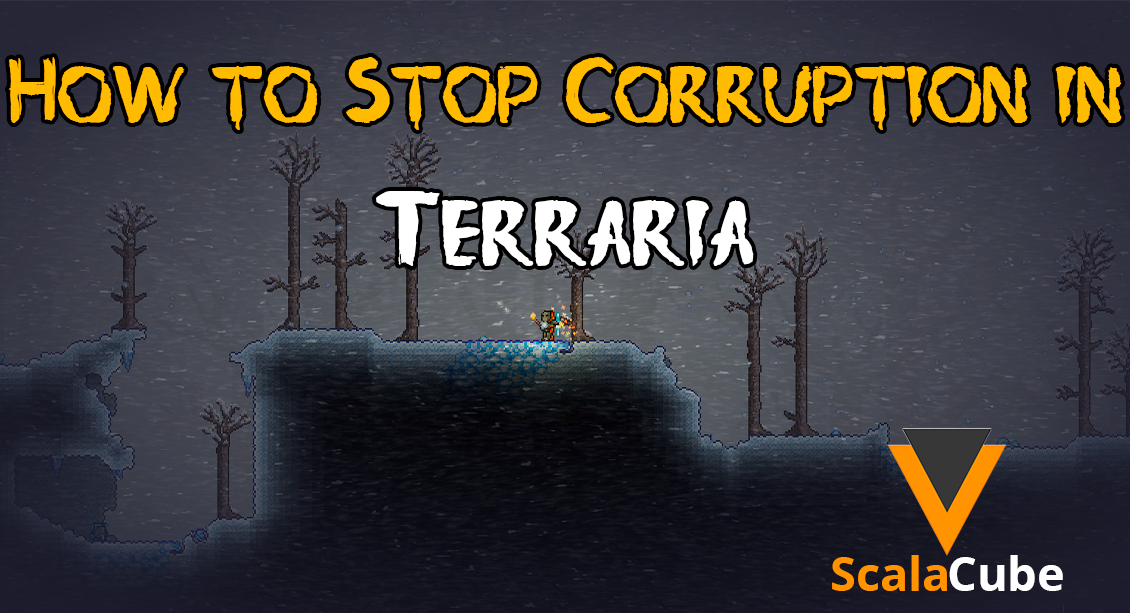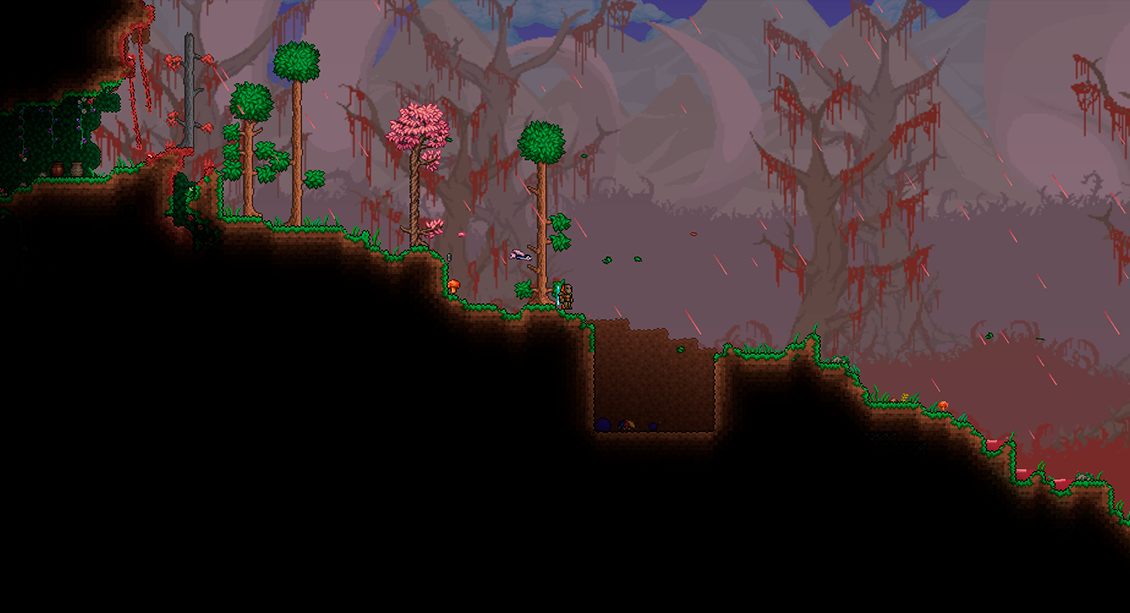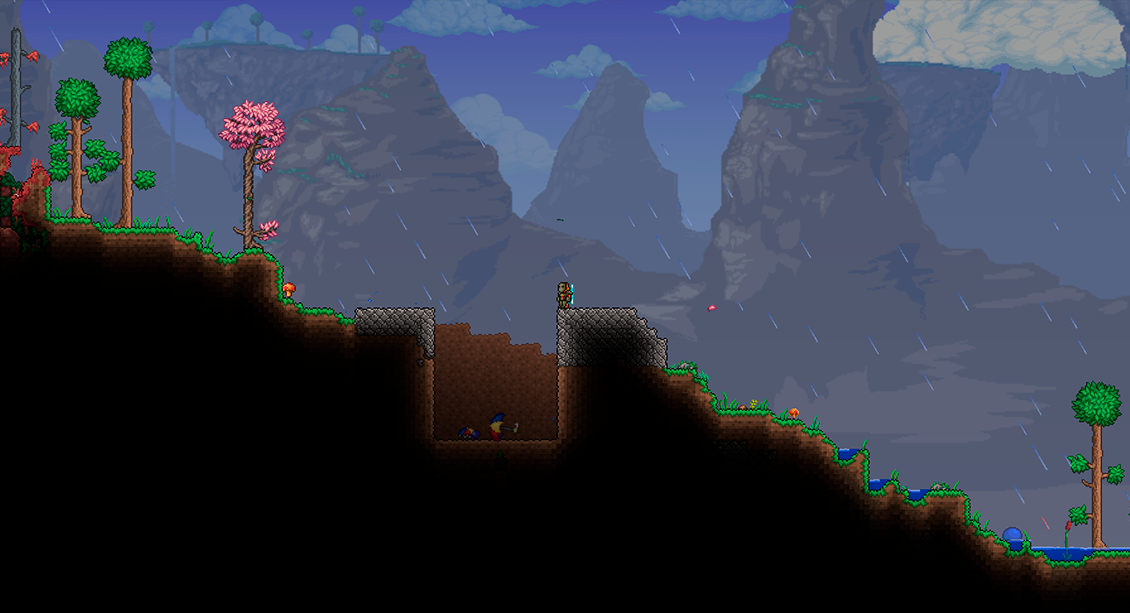How to Stop Corruption in Terraria

Make Your Own Terraria Server
Corruption Terraria is one of the spookiest biomes in the game—it’s dark, dangerous, and filled with monsters that want you deleted. But as creepy as it is, it’s also important for crafting and game progression. The real problem? It spreads. And fast. Especially when you enter Hardmode, the Corruption (and Crimson) will start infecting your whole world unless you put it in check.
So, if you’re panicking about your base turning into a purple wasteland, this guide will show you exactly how to stop the Corruption in Terraria—with no fluff, just real, effective methods that work.
Stopping Corruption in Terraria
The first rule of thumb for how to stop the Corruption in Terraria is quarantine. No joke. Build a 3-tile-wide trench around the edges of any evil biome. Think of it like digging a moat around a haunted castle. Now here’s the trick: line it with non-corruptible blocks like wood, clay, or bricks so that the purple plague doesn’t just hop across.Once you enter Hardmode, you can go full Ghostbusters with the Clentaminator. It's a magical leaf blower of purity that sprays a cleansing solution, converting corrupted tiles back to normal. You’ll need to defeat a Mechanical Boss first to unlock it, but once you do, it becomes your best friend.
As an extra layer of defense, plant Hallowed Seeds around the infected areas. Since Hallow can’t be corrupted, it acts as a clean buffer zone that slows or even stops the spread.

Pre-Hardmode: Set the Stage
In Pre-Hardmode, your options are limited, but there’s still stuff you can do. That trusty 3-tile trench is your best bet. Evil biomes spread fastest above ground, so use Sunflowers and grass blocks from clean areas to slow them down.Sunflowers can’t be corrupted (at least not before Hardmode), so plant them generously along the edges of the biome. Think of them as your bright, happy army against the gloom.
Hardmode: The Real Fight Begins
Once Hardmode starts, all bets are off. New Corruption and Crimson biomes will spawn, and they don’t care about your earlier efforts. That’s why you need to act fast.Break Altars carefully—each time you do, it has a chance to spread the evil even more. Also, holy water can purify blocks, but it’s not the most efficient tool in a full-scale outbreak. Use it only when absolutely necessary.
Your MVP in this phase? The Clentaminator. It blasts through corrupted areas and turns them clean in seconds. Just make sure you always have enough Green Solution (or Blue Solution for Crimson).
Pro tip: replace corrupted areas with Hallowed blocks where possible. Since Corruption and Crimson can’t infect Hallow, it creates a permanent anti-corruption barrier.
Identify the Source of Corruption
If you’re managing a server or playing with mods, you’ll want to get detective-y. Corruption can spread because of bugged or outdated files, player exploits, or just plain old cheats.Keep an eye out for suspicious behavior, and if you’re an admin, you might need to remove infected mods or files. Sometimes players can unknowingly carry around glitched tiles or accessories that mess with the map.
How to Defend Against Corruption in Hardmode?
Corruption, Crimson, and even the shiny Hallow all spread through blocks like stone, sand, ice, and dirt—up to three tiles away. That means your world can get overrun quickly if you’re not careful.To truly contain corruption Terraria-style, build four-tile-wide barriers around your important areas, like your base or NPC towns. Use non-corruptible blocks (wood, ash, clay, obsidian, etc.) to line the walls.
Some players build beautiful tunnel systems that loop around the perimeter. Not only do these look cool, but they also act as a hard stop for evil biomes. Just make sure the tunnels are far enough out that your base and farms don’t get caught in the crossfire.
Avoid placing buildings inside the buffer zone—you’ll thank yourself later.

Utilize Mods to Combat Corruption
Let’s be honest—sometimes Terraria needs a little extra help. That’s where mods come in. If you’re playing modded Terraria, there are several tools that can help you get rid of corruption Terraria-style with ease.But before you go wild downloading everything:
- Research the mod. Make sure it’s compatible and bug-free.
- Backup your files. If anything breaks, you’ll have a clean save to go back to.
- Set boundaries. Cheating can kill the fun, so decide what’s fair game.
- Adjust difficulty. Don’t make it so easy it’s boring—or so hard it’s rage-inducing.
Mods can be lifesavers, especially for long-term worlds or multiplayer servers. Just don’t go full god-mode unless that’s your vibe.

What Are the Best Long-Term Fixes?
Besides building trenches and blasting tiles, here’s how you can future-proof your world from corruption:- Stay updated. Keep Terraria and your operating system fully patched to avoid weird bugs that cause corruption.
- Use antivirus software. Protect your save files from outside threats.
- Backup regularly. Nothing’s worse than losing a 200-hour world to file corruption. Keep your saves safe and sound.
Taking a few minutes to prepare can save you hours of rebuilding.
What Happens If You Let Corruption Run Wild?
If you ignore it, corruption Terraria-style will take over everything—grass, trees, NPC homes, you name it. It can mess with progression, ruin farms, and even boot NPCs out of your towns. Not to mention it makes everything look like it’s been cursed by a purple storm.And in multiplayer? That chaos leads to mistrust, frustration, and sometimes full-on player wars. Yikes.
Contain it early, and contain it smart.
Wrapping Up
Corruption in Terraria isn’t unbeatable—it just takes some strategy, elbow grease, and the occasional laser-blaster leaf gun. By staying updated, using the right tools, and laying down some smart defenses, you’ll keep your world clean and playable.Whether you're modding it up or doing it vanilla-style, now you know exactly how to stop the Corruption in Terraria—and keep it stopped.
If you want to upgrade your Terraria gameplay, consider Terraria server hosting! Enjoy lag-free performance with high-speed SSDs and powerful processors. Customize settings, expand as needed, and rely on 24/7 support with a 99% uptime guarantee. Whether you're exploring or fighting bosses, we keep your world running smoothly.
FAQs
How do you mine the Corruption in Terraria?
To mine through corrupted areas, you’ll need a Nightmare Pickaxe or better. In Hardmode, stronger tools like the Pickaxe Axe make the job easier and faster.
How to get rid of Corruption Terraria style without Clentaminator?
You can use purification powder in early game, or manually dig trenches and replace corrupted tiles with non-corruptible blocks. Holy Water also works, but it's less efficient.
What is Corruption in Terraria, and why does it spread?
Corruption is one of Terraria’s evil biomes. It spreads through specific tiles (like stone and dirt) and can take over your world if not contained, especially in Hardmode.
Make Your Own Terraria Server
Copyright 2019-2025 © ScalaCube - All Rights Reserved.